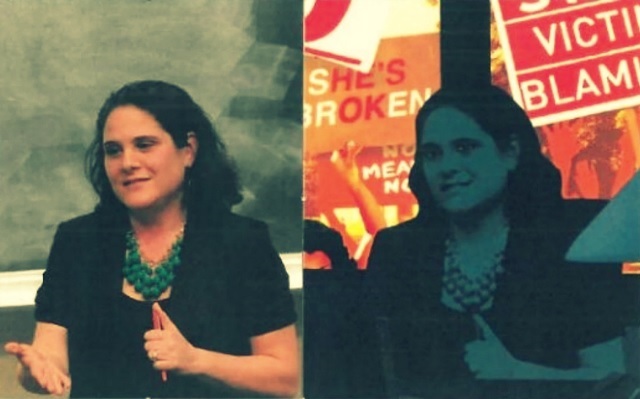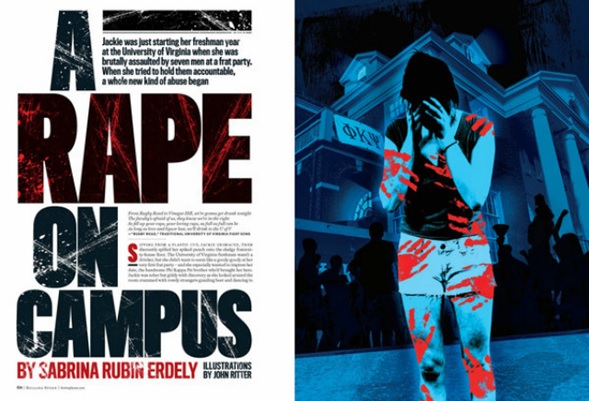Originally published at Prodavinci.com.
By the end of 2014, the legendary culture magazine Rolling Stone published an article in which they denounced a collective rape at the University of Virginia. The piece triggered a huge media coverage about sexual crimes on university campuses, and put on the spotlight the indifference of colleges for apparently not taking action to stop this outrageous events from happening.
Months later, the magazine had to unsay their article “A Rape on Campus”, after an investigation from Columbia’s Graduate School of Journalism, developed by Sheila Coronel, Derek Kravitz and the two times winner of the Pulitzer Prize, Steve Coll, found “fundamental mistakes of reporting and fact-checking” on the piece.
Columbia’s report, called “What Went Wrong?” was requested by Rolling Stone magazine, after recognizing inconsistencies in the article. According to Columbia’s report, Rolling Stones mistakes could have been avoided, had the magazine followed basic journalistic reporting methods. Nonetheless, the report was written months after the University of Virginia’s image was highly damaged.
A journalistic lesson
There is an ethic lesson in Columbia’s report. Their specialist followed carefully every information source and every word written on the original piece, in order to detect any possible mistakes on the article.
Sabrina Ederly, writer of Rolling Stone’s piece, built the story using only one source: “Jackie”, an alleged victim of a gang rape in the University of Virginia, whose true identity was never revealed. Ederly described how a freshman student was brutally raped by 7 students in a party at the fraternity house Phi Kappa Psy, where she was invited by a student named “Drew”. Ederly’s article says that after being raped, “Jackie” called her 3 best friends to be escorted outside the frat house, but they refused to take her to a hospital because they “didn’t want to damage their reputation”, and because they were afraid to be kept out of the fraternity in the future.
However, the report reveals that Ederly never looked for the 3 friends mentioned by “Jackie” to verify the information, and the magazine didn’t fact-checked the article. This means that the magazine published an article quoting 3 sources who never actually talked to them; they trusted Jackie’s alleged conversation with her 3 friends.
Another weak spot is shown when on Ederly’s article, a young man invited “Jackie” to the frat’s party. That student is named “Drew” on the article, and it is written that “Jackie” met the boy while working as a safeguard on the university’s pools, but the young man could not be identified. His existence is still in question.
Columbia’s report also confirms that the magazine didn’t research properly and didn’t give Phi Kappa Psy enough information in order for them to comment on the matter. The fraternity complains that Rolling Stone magazine didn’t mention exactly what was the rape case they were referring to. On the contrary, the journalist just asked questions in the sort of: “I have information about allegations of a gang rape that happened in the fraternity, what can you comment on the matter?”
The research team that constructed Columbia’s report also recommended media to meticulously fact-check their journalistic pieces and warned that if this process wasn’t done properly, victims could be offended and credibility could be harshly affected.
Authorities did announce in a press conference that they didn’t find enough proof to suggest that a gang rape actually happened in the university campus, but Ederly carried on with her article.
The main Rolling Stone’s mistake was to put their reputation at risk by using just a single source for a breaking news piece. Ederly and the magazine’s editor, Sean Woods, were seduced by the image of a young girl supposedly fighting injustice, facing a total lack of reaction from the University of Virginia.
After having finished the report, Columbia’s Graduate School of Journalism members presented their piece. To see the entire press conference, click here.
A case closes, another one opens.
Jackie lied. Rolling Stone published Columbia’s report on their website, where the original story once was, and also printed the report on their next issue. Editor in Chief, Will Dana, also published a note apologizing with readers and all the people affected. But not any of this actions prevented Nicole Eramo, Dean of Students of the University of Virginia, from presenting a law suit against Rolling Stone.
Eramos is pursuing to obtain a compensation of more than 7.5 million dollars from Wenner Medi, the company that owns the magazine, and from Sabrina Ederly, the author of “A Rape on Campus”.

The precedent photo was included as evidence in Eramo’s case. She says that the magazine’s intervention on the picture shows her as a bad person and the article portrays her as someone who silences investigations to bring rape cases to justice. Eramo accuses the magazine of misrepresenting her. She says she received hundreds of emails from ex-students sending her hate messages, insults and threats, and she believes it is Rolling Stone’s responsibility.
A website for donating money to pay for Nicole Eramo legal actions against Rolling Stone was created. The goal is to collect 500 thousand dollars, and so far, they’ve reached 30 thousand.
Eramo also states that Rolling Stone’s article completely destroyed her credibility, damaged her reputation and harmed her emotionally. She believes every mistake could have been avoided if the magazine had fact-checked the article.
Rolling Stone’s General Editor assumed full responsibility for the mistakes committed in the article’s elaboration process and announced that nobody would be fired. Ederly and Rolling Stone’s editors gave in to the desire to publish a shocking story. “A Rape On Campus” seemed to have found the tip of the iceberg, and a canny edition would make the piece into a best seller, but things didn’t go as planned.
The University of Columbia gave a journalism lesson: research is the cornerstone of good quality journalism. Letting go for what looks attractive and good for sales can cause terrible consequences. For Rolling Stone, the absence of an in-depth research and an exhaustive fact-checking, put into question the magazine’s reputation that for many years had been bulletproof.


